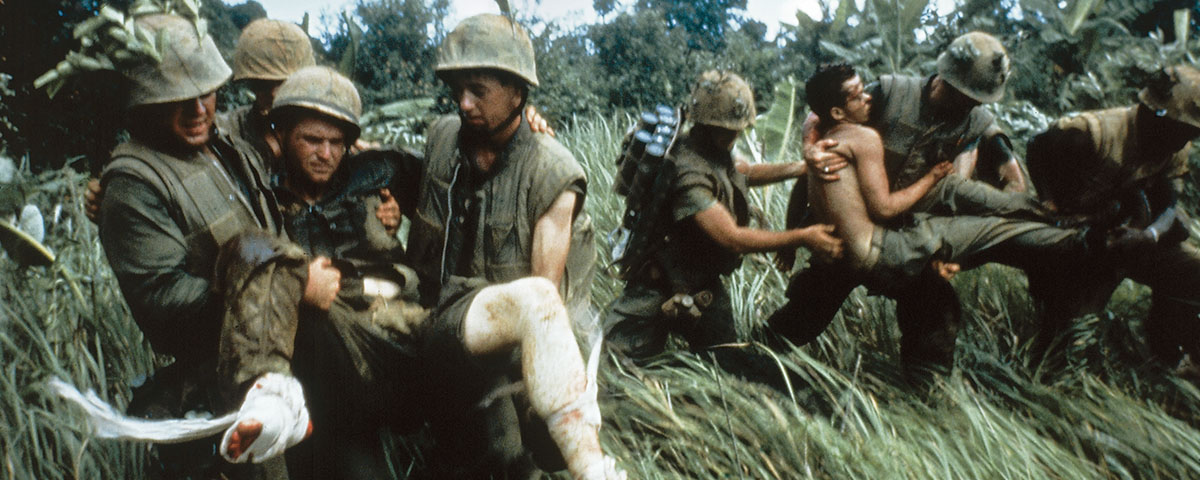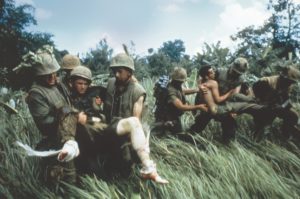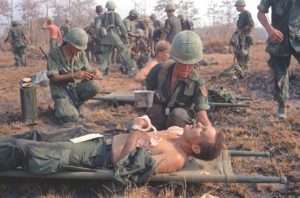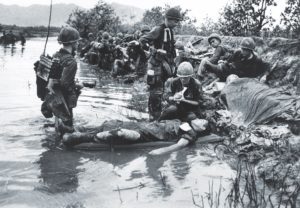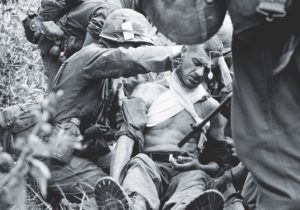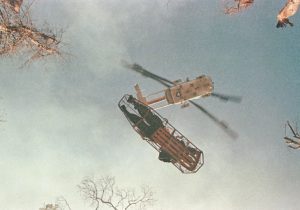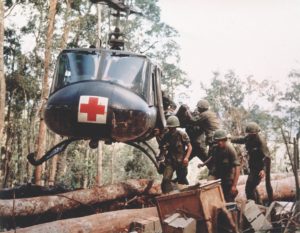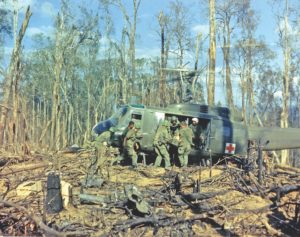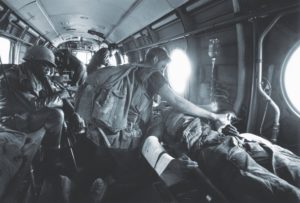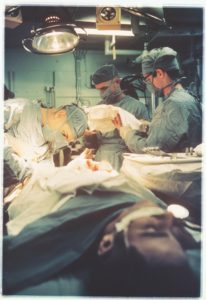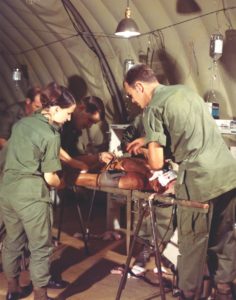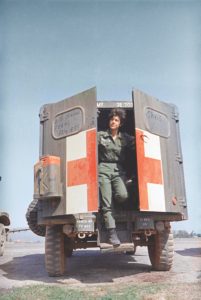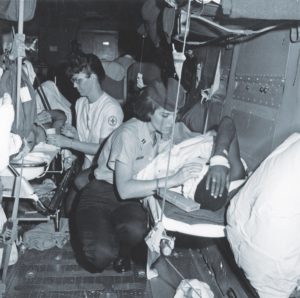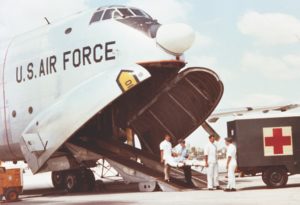From the battlefield to the flight home, medical teams saved life and limb with quick responses
Improvements in medical care from World War II and Korea allowed for better outcomes during the Vietnam War. One of the main advances was the use of helicopters for evacuation of wounded troops, known as a dustoff. In 1968 at the height of the conflict, 116 air ambulances evacuated more than 200,000 troops. This rapid movement resulted in an average time from battlefield wound to hospital admission of just 2.8 hours.
Once stabilized and evaluated in the air, the incapacitated were taken to a mobile army surgical hospital, made famous in the TV program M.A.S.H., set in Korea. A MASH facility, typically 60 beds in tents, could be expanded to 200 beds using easily moved inflatable shelters designated as “medical unit, self-contained, transportable,” or MUST.
Small arms, grenades and booby traps frequently caused multiple wounds, often in dirty and wet conditions. Pioneering methods to reduce infection, transfuse whole blood, and operate on patients reduced the mortality rate in Vietnam. Army Col. Norman Rich originated vascular repair for military trauma, allowing badly damaged limbs to be saved.
The most severely wounded were flown in transport planes equipped with litters to larger hospitals and trauma centers in the Philippines, Japan or the United States. Thanks to advances in field care and evacuation procedures, 98 percent of wounded soldiers who made it to the hospital survived.

